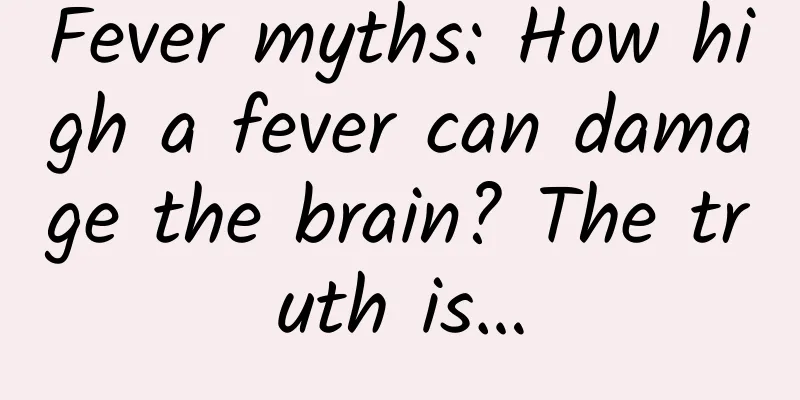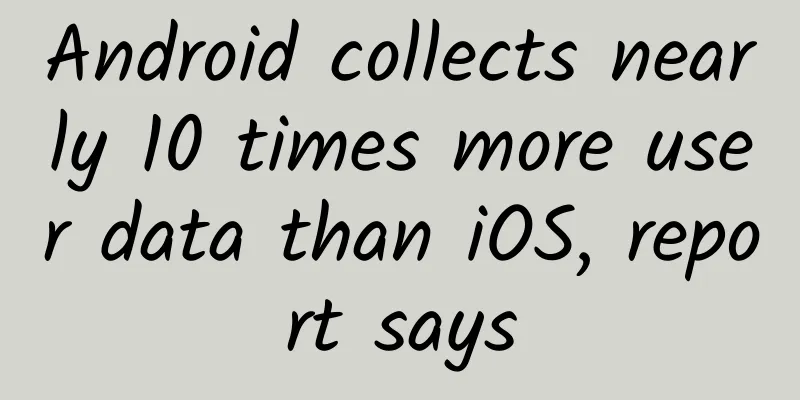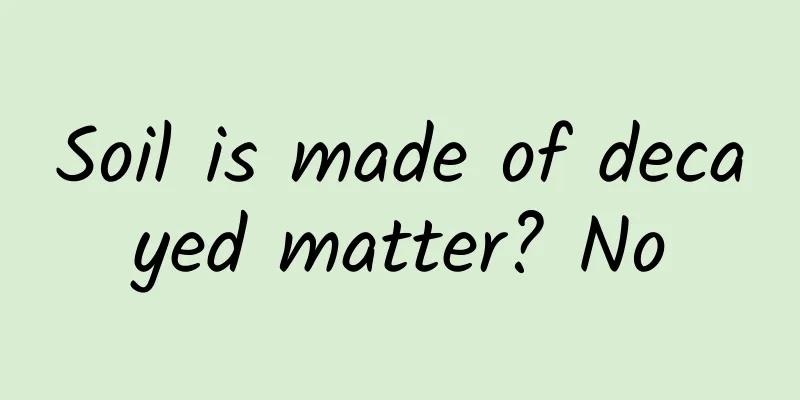Fever myths: How high a fever can damage the brain? The truth is…

|
You must have heard others say A child's fever may damage his brain So how many degrees will it burn out the brain? I didn't become a genius and soar to the sky. Is it because I became stupid when I was a child? Headache and fever are common recently The situation for children is even worse. Questions about children's fever Let me make it clear in one article today! If we have to give an indicator, it would probably be that only when the body temperature exceeds 41.5℃, would the brain be damaged due to excessive fever. In other cases, as long as it is a normal fever, even a "high fever" of 39 degrees Celsius, it is only considered a normal temperature and will not damage the brain. So whether you are smart or not when you grow up has nothing to do with fever, so don't make excuses. This answer may be completely different from many people's impressions. After all, a body temperature of 41.5℃ is hard to hear at normal times, let alone encounter it. We have often heard that some people became "stupid" when they had a fever when they were young. What is going on here? Image source: Photo Network In fact, everyone has completely reversed the cause and effect. It is not the fever that damages the brain, but the diseases that damage the nervous system that cause fever symptoms. For example, children infected with Neisseria meningitidis, Japanese encephalitis virus, etc. may suffer from meningitis, which can cause damage to the nervous system, and these diseases will also cause fever when they occur. In this process, fever is only a symptom, not a cause. Image source: Photo Network Of course, this does not mean that children’s fever will not damage their brains, so we don’t have to worry about it. The physical discomfort caused by children’s fever is real, such as lack of energy, loss of appetite, convulsions, etc. At the same time, children’s fever may also be a manifestation of other diseases, such as the recent hot mycoplasma pneumonia and influenza. Therefore, children’s fever should be taken seriously. If the situation is serious, such as unconsciousness or persistent high fever, the child should be sent to the doctor immediately. 38.5℃ is the body temperature watershed in the eyes of many parents, because based on the degree of fever divided by axillary temperature, 38.5℃ is no longer considered a low fever. Low fever: <38℃ Moderate fever: 38-39°C High fever: 39.1-40℃ Hyperthermia: >41°C Many people think that medication is needed when the temperature is above 38.5℃, but not when it is below 38.5℃. This is actually wrong. Because antipyretics are mainly used to relieve symptoms, whether to use them depends mainly on the child's comfort. If the child is in good spirits, or sleeps soundly, and does not suffer from lethargy, muscle aches, persistent high fever, or other discomfort, then even if the temperature exceeds 38.5℃ for a short time, you can temporarily not take medicine and continue to observe; if the child obviously feels uncomfortable, you can take medicine even if the temperature does not reach 38.5℃. Image source: Photo Network Fever means the child's body is dealing with pathogens in the body. Generally, the temperature will drop by itself later, so don't worry too much. If you want to make your child feel more comfortable, you can use some physical fever-reducing methods to help reduce the temperature, such as: Increase water intake When you have a fever, your body will lose a lot of water, so you can increase your water intake appropriately. Warm water bath When the armpit temperature exceeds 38℃, you can try a warm water sponge bath. But you can't just wipe everywhere! Mainly wipe the neck, armpits, back and groin, avoid the chest and abdomen, and the water temperature should not be too high, controlled at around 35℃. Ice pack cooling The places where ice packs are placed are similar to those for warm water baths, mainly on the neck, armpits, groin, elbows, etc. Note that the ice packs are not in direct contact with the skin and should be wrapped with a towel or something similar. Image source: Photo Network Children take medicine differently from adults, and there are more precautions to pay attention to. The main focus is on the following aspects: The choice of antipyretic medicine varies according to the age of the child Over 6 months: Ibuprofen or acetaminophen; 3 to 6 months: only acetaminophen can be used; Under 3 months old: Avoid self-medication and seek medical attention promptly. In addition, no matter what age group the child is in, when the family uses antipyretics to reduce fever, it is best to use a single antipyretic drug. It is not recommended to use different types of antipyretic drugs alternately. Use the medicine strictly according to the instructions Before your child takes any medicine, be sure to read the medicine instructions to confirm that the medicine and dosage are appropriate for your child's age and weight. At the same time, you should also pay attention to the dosage and time interval. Do not exceed the standard dosage just because the child's fever does not go down. If children have difficulty taking medicine, suppositories can be used In cases such as vomiting and inability to take antipyretics orally, of course, suppositories must be used under the guidance of a doctor. Combination cold medicines are not recommended The ingredients in compound preparations are relatively complex and may overlap with those of antipyretic drugs currently in use, leading to excessive dosage. Image source: Photo Network There are many reasons why children have fever. Some cases cannot be solved by physical cooling or medication at home, so they must be sent to the hospital. The younger the child, the more serious the unexplained fever should be. For example, children aged 0 to 2 years should go to the hospital immediately if they encounter the following conditions: Infants under 3 months old: Fever above 38°C; Infants aged 3-6 months: Fever over 38.9°C, or body temperature not exceeding 38.9°C but abnormally irritable, listless, or looking very uncomfortable; Children aged 6 months to under 2 years: unexplained fever exceeding 38.9°C and not going away for more than 24 hours. Children over 2 years old can be cared for and observed at home if they are in a normal mental state (can interact normally with adults) after taking antipyretics and can drink enough fluids. However, you should also seek medical attention as soon as possible if: ☛Abnormal mental state, such as slow response, continuous drowsiness, or irritability, crying and difficult to comfort; ☛Recurrent fever for more than 72 hours with no improvement; ☛ Frequent vomiting and inability to take in any fluids. In addition, other symptoms associated with a child's fever should not be taken lightly. If any of the following symptoms occur, do not delay and go to the hospital immediately for a doctor's diagnosis: ☛A rash appears but the fever does not subside; ☛When the baby has very uncomfortable conditions such as earache, abdominal pain, headache, etc., the baby may cry abnormally or pull his ears; ☛Labored breathing, shortness of breath; ☛Infants and young children have not had a wet diaper for more than 6 hours, and older children have not urinated for more than 6-8 hours; ☛Fever accompanied by convulsions (seizures). Finally, I would like to remind everyone that if your child has underlying diseases such as congenital heart disease, malignant tumors, lupus erythematosus, kidney disease, etc., then the methods mentioned above may not be applicable. For these children, any degree of fever deserves attention and they need to seek medical attention as soon as possible. Image source: Photo Network Child with fever Parents should have a good attitude Pay attention to the condition Don't be overly anxious Help your child recover as soon as possible Statement: This article is a medical-related educational popular science article. It does not involve specific treatment methods or medical behaviors and cannot replace hospital visits. Experts collaborating on this article References [1] Wang Qi, Su Shaoyu, Liu Lamei, et al. Interpretation and content analysis of clinical practice guidelines for pediatric fever management[J]. Journal of Nursing, 2021, 36(14): 28-31. [2] Bai Haijing. Drug treatment of fever in children[J]. Health Guide, 2020, 26(05):10-11. [3] Qin Hongli, Ren Jingjing. Standardized diagnosis and treatment of children's fever in primary medical and health institutions[J]. Chinese General Practice, 2020, 23(07): 866-869. [4] Li Xia. Clinical nursing intervention for children with fever[J]. Primary Medicine Forum, 2015, 19(35): 5018-5019. Content Production Editor: Zhang Fuyao Map: Eastern Zhou Dynasty |
>>: Calculate rationally and order emotionally: Why are we so easily prone to impulsive consumption?
Recommend
Muxi Reading 1.5.1 A huge amount of resources for you to choose from
【Software Description】 Muxi reading software is a...
How to run the fastest on the track? The "fastest curve" you don't know!
Life is like a race track, and we are often curio...
No. 1 in the world! When it comes to "conquering the stars and the sea", the Chinese have never been better than anyone else!
On April 29, 2021, China launched the core module...
How much is the investment price of Hami Mechanical Equipment Mini Program?
Starting a business requires costs, and mini prog...
Electric Technology Car News: Chery's new version of EQ is released. How can new energy vehicles that rely on subsidies to attract users gain a foothold?
A few years ago, Chery QQ was everywhere on the s...
The video industry has experienced many twists and turns. Where will it go in 2015?
In 2014, the three giants BAT continued to recrui...
In 3 minutes, you can learn about all advertising resources in iQiyi’s information flow!
The latest data from iResearch MUT in April shows...
Mobidev: Top 3 Fintech Trends in 2022
As one of the most disruptive industries, FinTech...
Are the hard days of the color TV industry coming to an end?
On November 22, along with the release of the 201...
If these "strange things" grow on your skin, it's skin cancer! Huaxi doctors teach you how to identify
On our skin There are some problems more or less ...
These 30 copywriting sentences are worth 30,000
Different classic copywriting has the same senten...
How does information flow copywriter play the numbers game? Click to use directly!
Recently I have seen a lot of information flow co...
Alipay users, please note that if you encounter fraud during transfer, you can report to the police to recover the money!
China News Service, Economic Network Client, Augu...
How to create a popular product that goes viral?
Being popular and a hit is what every product asp...



![[Practical Application] How to use these 7 types of traffic to create a hit product?](/upload/images/67cc245ce78f7.webp)





